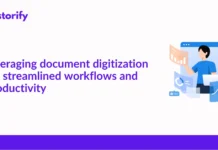Microsoft Azure Service Bus is now seen as a deprecated solution – but is it?
In this article, we dive deep into the details of what makes this service so attractive and if it is really deprecated. This way, you can decide if Microsoft Azure Service Bus is still viable for your business.
Contents
Touching on Microservice Architecture
We already have an extensive discussion about Azure Service Bus in .NET Core, but some points bear repeating. These include how it relates to microservice architecture.
Microservice architecture is a type of software design that splits an application into interconnected, independently deployable services. This style of architecture allows app teams to quickly build, test, and deploy applications with high availability and scalability.
Instead of having one large application with many dependencies – any change to that application has the potential to cause disruption or failure – teams opt for a microservices approach so that each service can be tackled individually and the complexity is reduced.
Microservices also have faster development cycles since each unit can be written by different developers at the same time and easily integrated afterwards.
Developers can focus on one particular task instead of dealing with the entire system at once, leading to better code quality.
By breaking down complex systems into smaller chunks, the microservice architecture allows for modular maintenance, rapid scaling, and efficient resource use.
From a business standpoint, microservice architecture can provide a range of benefits. It can:
- Increase the speed at which new software is created and deployed, allowing businesses to develop products more quickly in order to stay ahead of the competition
- Improve scalability and enhance the capacity for faster bug fixes and updates, meaning teams don’t have to wait for long periods for their software to be fixed or modified should any issues arise.
- Provide better control over technological stack selection, enabling businesses to choose from various frameworks and platforms that best meet their objectives.
- Create environments that are much easier to manage than complex monoliths.
All in all, these benefits provide businesses with an enhanced ability to deliver quality applications efficiently and cost-effectively.
What Is the Role of Bus Transport?
Utilizing a bus-based transport layer to connect microservices can be an efficient way of handling communication between them. It:
- Reduces the need for content delivery networks, since all services can communicate through a single endpoint
- Eliminates multiple login attempts and makes it easier to securely route requests without needing to be aware of complex backend API URLs
- Offers more scalability than traditional architectures as it can easily grow with a service’s needs and manage high traffic levels with fewer resources
- Enables rapid deployment for new services or updates
Is Microsoft Azure Bus Deprecated?
When it comes to messaging services, the Azure Microsoft Service Bus has been a go-to solution. However, with recent developments and updates, some have raised questions about whether the legacy version has been deprecated in use.
In actuality, the answer is yes. The old version has already been deprecated since May .
It means that:
- Microsoft has stopped providing support for version 1 and will no longer release bug fixes or patches.
- Developers are encouraged to migrate their applications to the latest version, as this provides access to more features and better performance.
- Existing services can continue running on the old version, but any new deployments should use the updated one.
What Is the Azure Service Bus 1.0?
This new version is called the Azure Service Bus 1.0. It is an integration service that enables you to securely exchange messages between different applications. It provides secure and reliable communication between services, devices, and business processes.
Compared to Azure Service Bus Transport Legacy 9.1, Azure Service Bus 1.0 introduces several improvements. Most of all, you can take full advantage of Azure and .NET Core. It helps you to develop faster and more efficient applications with fewer resources.
Conclusion
For businesses looking to create highly scalable and efficient applications, microservice architecture is a valuable approach. By leveraging a bus-based transport layer like Azure Service Bus 1.0, organizations can ensure secure communication between services while enabling rapid deployment of new features and bug fixes.
But if you are still using the legacy version, now is the best time to migrate. Work with a .NET developer to help you get up-to-date with the latest version and stay ahead of the competition.














